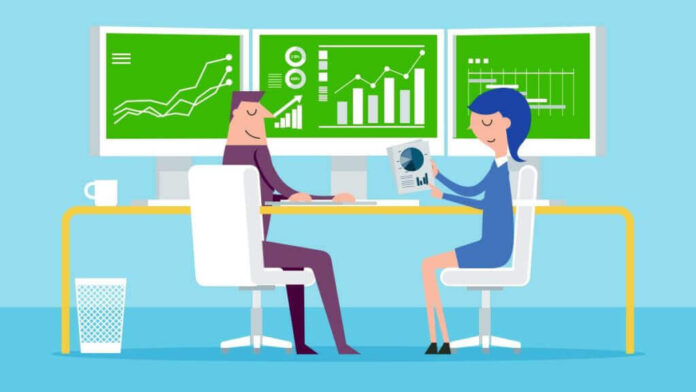The purchase process is the set of stages and actions that a potential user or consumer complies with until the purchase decision is made and a product or service is purchased, becoming a customer of a company.
With online marketing , companies began to have a new model to advertise and sell their products and services.
This process became less invasive and more oriented towards those consumers who are really interested in the company’s solutions : the so-called purchase process.
When a company begins to invest in Internet business strategies, it is important to develop comprehensive planning that takes into account the actions of disclosure and customer attraction, as well as sales mechanisms.
This plan will be essential to guide the work of business marketing . However, if planning does not take into account the customer buying process, the chances of your strategies failing are great.
To avoid losing time and work, it is essential to know your target audience: needs, desires and consumption habits.
This information will guide your planning and marketing and sales actions . Do you want to understand a little more about the buying process? Then see the following paragraphs:
The purchasing process
The purchasing process is the model used to define the commercial stage the consumer is in.
By understanding your consumption habits and monitoring what you are looking for on the Internet, it is possible to discover what moment of purchase you are and with that, dedicate effort to efficiently lead you to the conclusion of the business.
This happens because the marketing team can produce and deliver content related to the wishes and needs of the consumer.
This information will prepare and guide that consumer through the different stages of sales, which will facilitate the work of the commercial team and increase the chances of concluding the business.
The purchase process is divided into 4 different stages:
- Learning: the client does not know or is not sure that he has a problem or that he has a need for a product or service;
- Recognition: the person searches and has access to information that helps them perceive the existence of a problem or a need;
- Consideration: when perceiving that they have a problem, the consumer continues to look for solutions and begins to consider the one that best fits their need;
- Decision: After analyzing the market options, the decision is made and the purchase can occur.
This sales process requires patience on the part of the company and the development of actions for each of these stages. It is those contents that will guide potential consumers through the different moments of the sale.
The sales funnel
When the consumer begins to consider purchasing a product or service, it enters the sales funnel .
Work at each stage of this process is essential to qualify the client and close a new business. The stages mentioned in the previous topic help to understand this digital marketing methodology .
Each of these stages is adjusted at the time of the sales funnel and guides the type of content to be used:
Top of the funnel (Top of the Funnel):
Here are the people who are in the “learning” phase. Since they are not specifically looking for a product or service, it is necessary that they understand that they have a need and that they are interested in your product.
Through the funnel (Middle of the Funnel):
Here are the people who are in the “recognition” phase. The content produced at that time should be dedicated to showing that your company has the solution it needs.
Bottom of the Funnel:
Here the client is in the “consideration” and “decision” phases and usually makes a comparison between the companies, products and services so that he can make the contract. It is the ideal time for the sales team.
As the stages of the funnel change, the number of people in each of them decreases. However, the further you go in the sales funnel, the more qualified the consumer is and, consequently, the more prepared they are to buy.
The impact on sales
The purchasing process positively impacts a company’s sales due to the amount of information generated about customers – allowing for more targeted work – and for creating a positive relationship between company and consumer.
See below how this business process can generate strategic advantages for a company’s sales sector:
Identify the time of sale
Consumers are at different times of purchase, and this is directly related to their consumption behavior.
If a salesperson offers a product for a person who is in the learning phase, it will be quite difficult to close the business. In addition to losing a prospect, there is still a waste of time and work.
However, if the sale occurs at the moment of “decision”, the chances of success increase considerably. For this reason, the purchasing process is essential to boost and improve the company’s sales.
Establish close relationships with clients
For this sales model to happen, it is important to know:
- who is your target audience;
- your wishes;
- needs you have;
- your interests;
- and their consumption habits.
This degree of information about people’s business allows the construction of a series of strategies that reinforce that relationship. With this, it is easier to conquer new customers and, above all, to retain the loyalty of those who already consume in your company.
Consulting sales
Personalizing customer contact humanizes the business relationship and generates strategic advantages for the business.
Using the purchasing process in your sales system allows you to create a consultative model in which people search for information and companies offer content and solutions.
This model favors the performance of the seller , who provides data on products and services, removes the person’s doubts and manages to work the sale directly and objectively.
Optimized management
This business model follows a formula. This favors the analysis of each stage of the process, allowing possible gaps to be identified and solutions to be proposed in an agile and efficient way without abrupt drops in your sales.
This agility in management makes the team have more focus and possibilities for success . The result is an increased chance of closing a business.
Productivity increase
If I know my client and understand their consumption habits, I know where they are at the moment of purchase and what their need is. Thus, my job as a seller is easier and more agile.
At the end of the day, I get to know who I can negotiate with or not, and with that, I can sell more and have better results.













